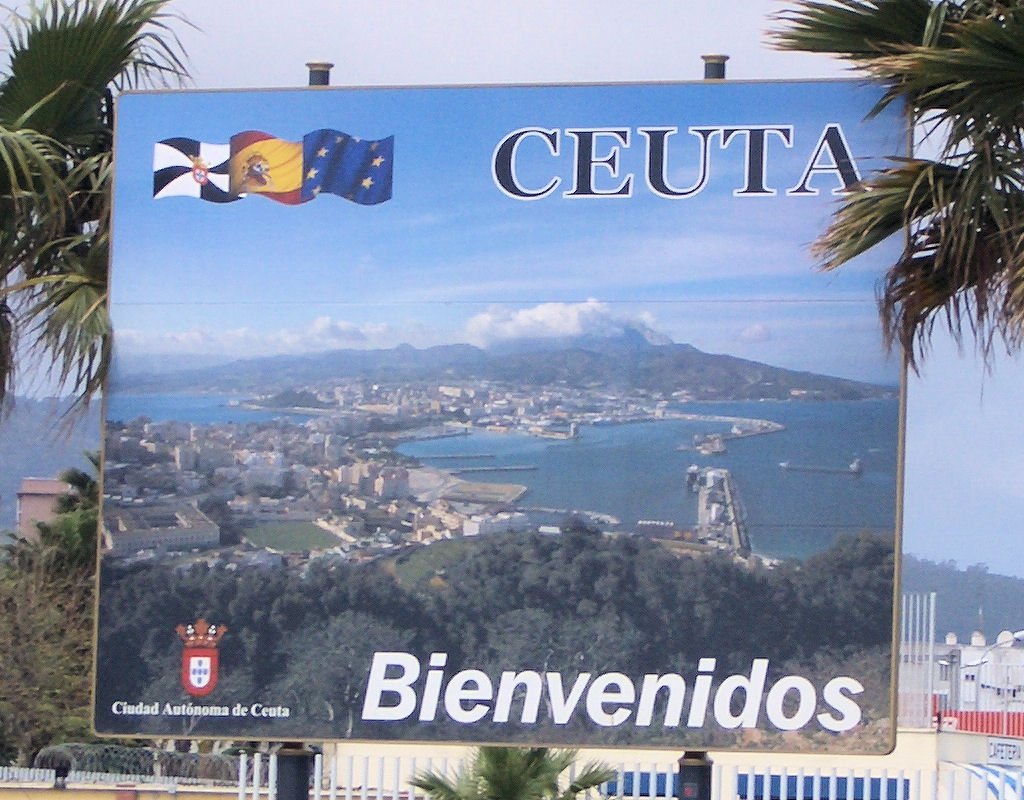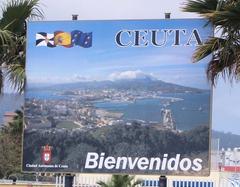
Ceuta Port Visiting Hours, Tickets, and Travel Guide
Date: 15/06/2025
Introduction: The Gateway Between Continents
Nestled at the intersection of Europe and Africa, the Port of Ceuta is a storied maritime gateway on the northern African coast, under Spanish administration. Its strategic placement on the Strait of Gibraltar has made it a crossroads for trade, military, and cultural exchanges for thousands of years. From its origins as the Phoenician outpost Abyla, through Roman, Islamic, Portuguese, and Spanish periods, Ceuta Port has been central to the region’s history and development. Today, it is a modern port offering passenger ferries, cruise amenities, and access to the city’s rich heritage, including iconic sites like the Royal Walls and the Foundation Museum of the Sea.
This detailed guide offers everything you need to plan your visit to Ceuta Port: historical context, practical information on port visiting hours and ferry tickets, accessibility and transportation advice, and highlights of nearby attractions. Reference authoritative resources such as Ferryhopper and Puertodeceuta.com for the latest schedules and travel updates.
Table of Contents
- Introduction: The Gateway Between Continents
- Ancient and Classical Foundations
- Medieval and Islamic Transformations
- Portuguese and Spanish Rule
- Modernization and Economic Growth
- Ceuta Port Today: Facilities and Operations
- Visiting Ceuta Port: Hours, Tickets, and Accessibility
- Transportation and Arrival Tips
- Historical Attractions Near the Port
- Cultural and Multicultural Significance
- Frequently Asked Questions (FAQ)
- Conclusion & Recommendations
- References and Useful Links
Ancient and Classical Foundations
Archaeological traces reveal settlement in Ceuta as far back as 300,000 years ago, notably at Benzú (Nomads Travel Guide). The Phoenicians established Abyla in the 7th century BCE, positioning it as a vital link between the Atlantic and Mediterranean. Carthaginians followed, enhancing its commercial and military role. Roman conquest transformed Ceuta—then Septem—into a fortified center commanding the straits. Remnants of their fortifications and civic structures are still visible today (Puertodeceuta.com; Pin Your Footsteps).
Medieval and Islamic Transformations
After the Romans, Ceuta was governed by Vandals, Byzantines, and Visigoths. In 534 CE, the Byzantines established a naval base, strengthening its defensive importance. Ceuta’s most transformative era began in 710 CE when it became the launch point for the Islamic conquest of Iberia; Tariq ibn Ziyad’s crossing from near Ceuta marked the start of centuries of Muslim rule in Spain (Nomads Travel Guide). Under Islamic rule, Ceuta thrived as a fortified port city and a hub for trade, culture, and the movement of people and ideas (Puertodeceuta.com).
Portuguese and Spanish Rule
Portuguese forces captured Ceuta in 1415, recognizing its strategic value and investing in robust fortifications and maritime infrastructure (Puertodeceuta.com). Through the Iberian Union in 1580, Ceuta came under Spanish sovereignty and remained so after Portugal’s independence. The Spanish built the Royal Walls (Murallas Reales), still a dominant feature of the port area (Hostal Plaza Ruiz Ceuta), and replaced natural harbors with modern docks and shipyards.
Modernization and Economic Growth
The 19th and 20th centuries saw pivotal changes: in 1880, Ceuta Port was declared a port of general interest, and in 1929, its free port status encouraged growth (Puertodeceuta.com). Despite interruptions during the Spanish Civil War, post-war expansion made Ceuta a major supply center for ships in the Gibraltar Strait, with substantial investments in infrastructure and services (Puertodeceuta.com).
Ceuta Port Today: Facilities and Operations
Ceuta Port is now managed by the Autoridad Portuaria de Ceuta, focusing on modernization and expanded services since 1996 (Puertodeceuta.com). It serves as a critical link between Africa and Europe, handling passenger ferries, cruise ships, and cargo.
Key features include:
- Modern passenger and vehicle terminals
- Cruise ship berths and marina services
- Bunkering (ship refueling) and logistics operations
- Seamless integration with Ceuta’s city center (Ferryhopper; Port Europe)
Ceuta Port is also a leading Mediterranean bunkering port (AIVP), and a vital departure point for ferries to Algeciras and select Moroccan destinations.
Visiting Ceuta Port: Hours, Tickets, and Accessibility
Visiting Hours
- The port operates daily, generally from 6:00 AM to 10:00 PM.
- Passenger terminals align with ferry and cruise schedules; some sections are accessible 24/7 for port operations.
Check exact times and seasonal variations on the official port website or with ferry operators.
Ferry Tickets
- Ferries to Algeciras and other Spanish ports run multiple times per day.
- Purchase tickets online via official ferry company sites, third-party platforms (Netferry, Ferryscanner), or at the port’s ticket offices.
- Advance booking is recommended, especially in summer. Prices start at €25 one-way; discounts available for children, seniors, and residents.
Accessibility and Facilities
- The port is accessible to pedestrians and vehicles, with clear signage in Spanish and English (Openferry).
- Facilities include accessible terminals, wheelchair access, restrooms, waiting lounges, Wi-Fi, and multilingual information desks (Hikersbay).
- Luggage trolleys, porter services, and security personnel are present.
Transportation and Arrival Tips
Arriving at Ceuta Port
On Foot:
A 10–15 minute scenic walk connects the port to Ceuta’s city center via the seafront (Netferry).
By Taxi:
Taxis are available at the terminal and Alfao pier. Metered and unmetered taxis operate—agree on a fare beforehand if not metered.
Contact: +34 856 925 225
By Bus:
There are no direct city buses from the port to the center, but the city’s compact size makes walking convenient. Buses connect to the Moroccan border and outlying neighborhoods (Ferryscanner).
By Car:
Disembark directly onto the N-352 road for access to the city or Moroccan border (4 km). A guarded car park is available, with the first hour free (Netferry).
Historical Attractions Near the Port
Ceuta’s city center and historical sites are easily reached from the port:
Royal Walls of Ceuta (Murallas Reales)
- 16th-century fortifications with panoramic harbor views (Cruisesheet).
- Visiting hours: 9:30 AM–6:30 PM (April–October), shorter in winter.
- Entry: ~€3 for adults; discounts available.
Parque Marítimo del Mediterráneo
- Artfully designed leisure complex with pools and gardens (Wanderlog).
- Open 10:00 AM–8:00 PM (April–September).
Monte Hacho
- Hilltop fortress and viewpoints over the Strait of Gibraltar (Cruisesheet).
Plaza de África, Casa de los Dragones, and Local Markets
- Central square, architectural landmarks, and bustling markets reflect the city’s unique character (Audiala).
Museums
- Foundation Museum of the Sea, Military Museum of the Legion, and others explore Ceuta’s multicultural past.
Beaches
- Playa de la Ribera and Playa del Chorillo are within walking distance for swimming and relaxation.
Cultural and Multicultural Significance
Ceuta’s identity is shaped by centuries of coexistence between Christian, Muslim, Jewish, and Hindu communities. Its architecture, cuisine, and festivals blend Spanish, Moorish, and Portuguese influences (FRS). The port remains a focal point for this diversity, supporting both commerce and cultural exchange.
The city’s special fiscal status as a duty-free zone makes shopping a highlight (Cruisesheet), and its compact size enables visitors to experience its multicultural vibrancy with ease.
Frequently Asked Questions (FAQ)
Q: What are Ceuta Port’s visiting hours?
A: Typically 6:00 AM–10:00 PM daily; ferry and cruise terminal hours may vary. Confirm with official port or ferry operator websites.
Q: Where can I buy ferry tickets?
A: Online via operator sites, third-party platforms, or at port ticket offices. Advance booking recommended.
Q: Is the port wheelchair accessible?
A: Yes, the terminal and key facilities offer full accessibility.
Q: What historical sites are near the port?
A: The Royal Walls, Plaza de África, the Cathedral, and multiple museums are all nearby.
Q: How do I get from the port to the city center?
A: Walk (10–15 minutes), take a taxi, or use local buses for areas further afield.
Q: What is the best time to visit Ceuta?
A: June to September for warm weather; book ferries in advance during peak season.
Conclusion & Recommendations
The Port of Ceuta is far more than a transit hub—it is a living crossroads of cultures, history, and commerce at the gateway between Europe and Africa. Its efficient facilities, accessible terminals, and proximity to historical sites make it an ideal starting point for exploring Ceuta’s unique blend of heritage and modernity. Whether you’re embarking on a ferry journey, touring the Royal Walls, or sampling local cuisine, Ceuta Port provides a seamless, enriching experience.
Tips for Visitors:
- Check ferry schedules and port hours in advance.
- Reserve tickets early in peak season.
- Bring valid ID/passport; non-EU travelers may need visas.
- Take advantage of the city’s duty-free shopping and multicultural cuisine.
- Download the Audiala app for travel updates and tips.
For more details, consult Puertodeceuta.com and Ferryhopper.
References and Useful Links
- Puertodeceuta.com
- Ferryhopper
- Wikipedia
- Port Europe
- MarineLink
- Gangwaze
- Netferry
- Cruisesheet
- Pin Your Footsteps
- Nomads Travel Guide
- Hikersbay
- All Aboard Hub
- Openferry
- Wanderlog
- Audiala
- Spain.info
- Out of Your Comfort Zone
- AIVP
